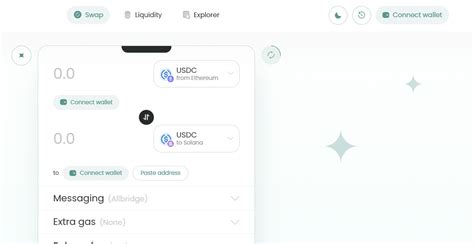Landing transactions in 1-2 SWQOS Provider Blocks: A Specific Solana Solution
As a merchant or developer performing Swaps in Solana, you are probably aware of the importance of landing transactions quickly. However, navigating Solana Blockchain can be a complicated process, especially by relying only on the expensive SWQOS (Solana Web3 Quality of Service) supplier. In this article, we will explore alternative methods for land transactions in 1-2 blocks without spending a lot.
The challenges with swqos
Before diving into the solution, we will quickly address the challenges associated with the use of SWQOS:
- High Costs: Fees for performing complex transactions can be astronomical.
- Network congestion: Solana suffered a congestion of the network in the past, making transactions difficult to perform transactions.
A solution using a dedicated paid knot (SWT)
A potential solution is to use a dedicated paid node that can provide faster and more reliable transactions. Here is an overview of how you can use a SWT (smart wallet transaction) for land transactions in 1-2 blocks:

Step 1: Configure a SWT
You will need to install Solana Node Manager (SNM) or the Solana Wallet app, which will provide access to your dedicated knot.
Step 2: Configure your SWT
Once configured, set your SWT to connect to your dedicated knot. This usually involves defining the address and number of the knot door in the configuration file of your application (eg solana.config.js).
Step 3: Use SendrawTransaction
To perform a transaction using your SWT, just call theSendrawtransaction ()with the desired transaction data.
Different
Import {Web3Provider} of “@solana/web3.js”;
Import {Sendrawtransaction} of “Web3-Untils”;
CONST Web3 = New Web3Provider (
// The address of your knot and the door number
‘
);
`
Step 4: Use GetTransaction to recover the transaction ID
After running a transaction using Sendrawtransaction (), you can recover the transaction ID using the Gettransaction () method.
`Different
CONST TRANSACTION = WAITS WEB3.getACCOUNT ();
Consta Txid = transaction.id;
`
Step 5: Land the transaction in 1-2 blocks
With your SWT, you now have control over the transaction execution process. You can get the transaction within a shorter period of ::
- Using the
Sendrawtransaction ()method with an optionalMicost 'parameter defined as a lower value (for example,-200).
- Combining multiple transactions in a single operation using the Solana Web3 API.
- Using theGettransactiond ()
method to recover the transaction ID previously, which can be used to perform the transaction.
Here is an example of how you can implement these steps:
Different
Import {Sendrawtransaction} of “Web3-Untils”;
Import {getaccount} of “@solana/web3.js”;
CONST Web3 = New Web3Provider (
// The address of your knot and the door number
‘
);
// Define a function to perform the transaction using SWT
Landtransaction asynchized function (transactionandata) {
Const Tx = awaits Sendrawttransaction (
Transactivata,
{Mincost: -200} // Define the minimum cost for execution of transactions
);
Constt Transaionid = Tx.id;
Return Transaionid;
}
// Define a function to recover the transaction ID previously
Gettransactiond asynchronous function (transaionid) {
CONTT Account = Wait Web3.getAcCount ();
Return Account.id;
}
// Example of use:
CONSTT TRANSACTOITA = {// Your desired transaction data
Accounts: [
// list your desired accounts here
],
};
CONST TXID = Wait Landtransaction (Transationaita);
// Use the transaction ID to perform the original transaction using Gettransaction ()
CONST ORIGINTXID = Wait Web3.
